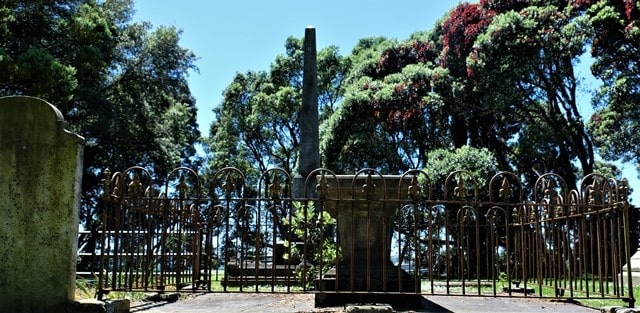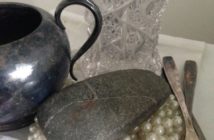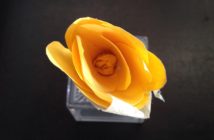I’ve always tried to be a fast reader. Took a course years ago in speed reading. That didn’t help. I always seemed to miss important words. Then I have to go back and reread the section. Of course that eliminates any race against time.
Sometimes my vocabulary gets in the way of reading. I presume a word that is unfamiliar probably is a colloquialism for a word I do know. Take for example the title of the book that won the 2017 Man Booker prize, Lincoln in the Bardo by George Saunders. My brain said ‘bardo’ must be a slang term for ‘bordello.’ This would be interesting. Who ever heard about U.S. President Abraham ‘Honest Abe’ Lincoln visiting a brothel?
The opening chapters were a bit odd. Words like ‘manifesting’ were used to describe certain changes in a person. As the story progresses, it becomes obvious, that, as a last resort, I must find the definition for ‘bardo.’ It turns out that ‘bar do’ is a Tibetan Buddhist word meaning ‘between two.’ To carry the betwixt deeper – between death and rebirth.
‘Rose petals rained down, a joyful provocation: red, pink, yellow, white purple.’ Roger Bevins III Page 97 Background painting: The Timekeeper by Sara Switzer
The spirits in Saunders’ novel are also in the middle echelons. Not like Poe’s Spirits of the Dead who are dead when dead, no further discussions. Nor are they at the opposite end like the scene in No Exit by Jean Paul Sartre. Three characters, confined to one room, dead but talking, antagonising each other, deciding they must be in Hell. And then there is Siegfried Sassoon’s Memorial Tablet with the line ‘I died in Hell’ – Passchendale.
The novel Lincoln in the Bardo covers one day and night. It is about the death of William (Willie) Wallace Lincoln, son of President and Mrs. Lincoln in February, 1862. A novel by definition is fiction. But there are elements in the book that are real. For example, Saunders uses actual quotes and provides the source details. Many are verifiable sources. However, not all of the references are legitimate. That merging real and imagination is part of the mocking allure Saunders puts into the story.
At 11 years old, Willie and his brother Tag contract typhoid. Tag survives, Willie succumbs. He is buried, temporally in the Carroll crypt, Oak Hills Cemetery, Washington, D.C. (Three years later President Lincoln was assassinated. President Lincoln and Willie are taken on the same train to burial in Oak Ridge Cemetery, Springfield, Illinois.)
Most of the characters are spirits talking about the Lincoln family and especially Willie Lincoln who has a speaking role after his death. But the Lincolns’ are not the only family in spirited discourse. Other individuals and families, histories and behaviours are recounted. Some, who have been dead for years, knew and talk about the antics of new arrivals. The congregated group met their demise via a variety of means. Deaths due, as John Donne says ‘…to Fate, Chance, kings, and desperate men.’
Competing manes complain about other spirits in the cemetery. Two are so agitated they fight each other. The spirits themselves talk about their own death. But never a mention of natron or other preservatives.
It is misleading to say the story takes place during one day and one night. Because, like everyone alive, we reminisce about the past and imagine the future during a 24 hour period.
Often the talkative entities expound on the expected positive life patterns of cemetery occupants, had death not interceded. Predictions are said as fact: the lost potential through death. It is the opposite state of predictions in A.E. Housemans’ To An Athlete Dying Young. The young man, a winner, died on the crest of his popularity. He will not have to deal with the life’s disappointments; perhaps loss of recognition and popularity.
There are somber echoes in Oak Hills Cemetery. One deceased person in the bardo, Roger Bevins III, tells how he committed suicide. He cut his wrists but then, too late, realised ‘I changed my mind.’ This ‘cry for help’ is not unusual. One young woman, in reality, cut her wrists but failed to die. Someone told her a better, more successful way to cut her arms. The next time she stayed in hospital, it was with both her arms wrapped from wrist to elbow with bandages.
In more realism outside the book, two men, rare survivors, jumped over the rail of the Golden Gate Bridge and lived. They had the same thought as Bevins. Kevin Hines jumped in 2000, he said ‘The millisecond my legs cleared it, the millisecond of true freefall, instant regret for my actions.’ Ken Baldwin took the leap in 1985. He said ‘I just vaulted over, and I realized, at that moment, this is the stupidest thing I could have done. Everything could have changed.’ They are alive today.
Saunders’ spirits exchange mild jokes. They talk about how some spirits transmutate into vines wrapping themselves around a person to get inside his head and change his thinking. The ruse does not work.
Reading the bardo, is like watching a series of very short short stories intertwining emotions and movement among the entities: alive and deceased. The 343 pages are a quick read and enjoyable. Some reviewers try to make a case for synthesizing Lincoln and slavery issues within the context of the revenant dialogues. Maybe. The story is fine as is, writing flows with energy and interest. There are twists involving trains, pigs, faces and other conflated manifestations.
George Saunders has written over twenty short stories published in the New Yorker. He has published several books and collections of short stories. Saunders said he was careful not to be maudlin, too serious or histrionic in Lincoln in the Bardo. Formerly a Catholic, Saunders converted to Tibetan Buddhism.
 Text and Images by Lee Switzer: Lee is a regular contributor to ARTbop – photo essays, articles and poetry. Lee is multi-talented producing sought-after images of local artists and exhibitions. He has been an archival photographer around Tauranga and the Bay of Plenty for some years – the details of this body of work are below. You can find examples of Lee’s contributions in our ARTbop archives.
Text and Images by Lee Switzer: Lee is a regular contributor to ARTbop – photo essays, articles and poetry. Lee is multi-talented producing sought-after images of local artists and exhibitions. He has been an archival photographer around Tauranga and the Bay of Plenty for some years – the details of this body of work are below. You can find examples of Lee’s contributions in our ARTbop archives.
Find more writing and photos by Lee Switzer at http://tauranga.kete.net.nz/tauranga_city_libraries_history/topics/show/2538-photographic-index-lee-switzer
AND WHILE YOU’RE HERE CHECK OUT THE ARCHIVES OF ARTbop WORDS for contributions by a range of talented readers and reviewers
If you would like to submit a contribution to ARTbop you can forward your submission to info@artbop.co.nz as a text document. Images are to be forwarded as low resolution jpgs (about 750 kb maximum) not included in the body of the article. However, please indicate in your text where each image is to appear and indicate the image you would prefer as the featured slider header.
ARTbop’s policy is to publish original content. If your contribution has been published elsewhere please indicate the publication and the date of publication. If your submission contains the work of others please provide accurate attributions.
ARTbop is aware of its obligation to maintain freedom of speech and creativity but ARTbop retains the right not to publish any submission and to edit where content is perceived by ARTbop to be factually wrong, unnecessarily malicious, defamatory or hate speech.





